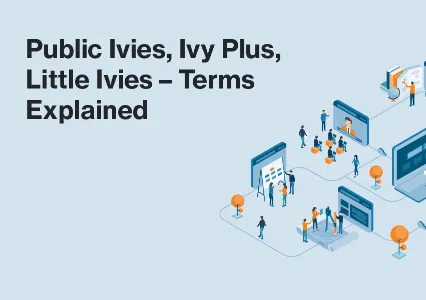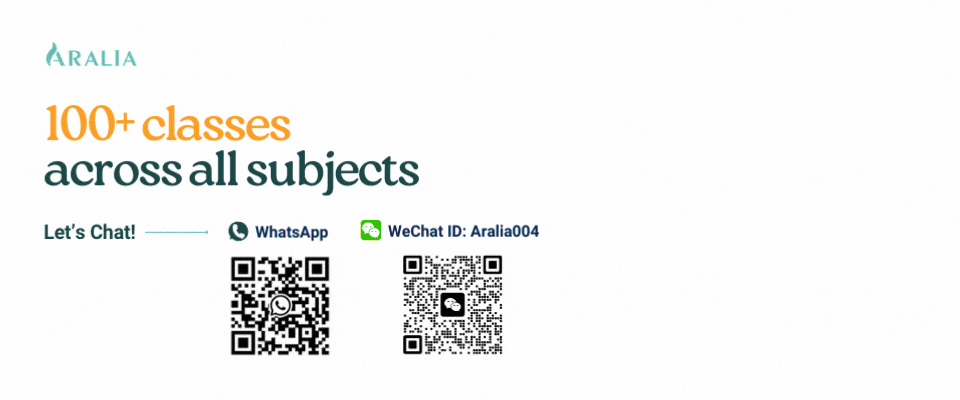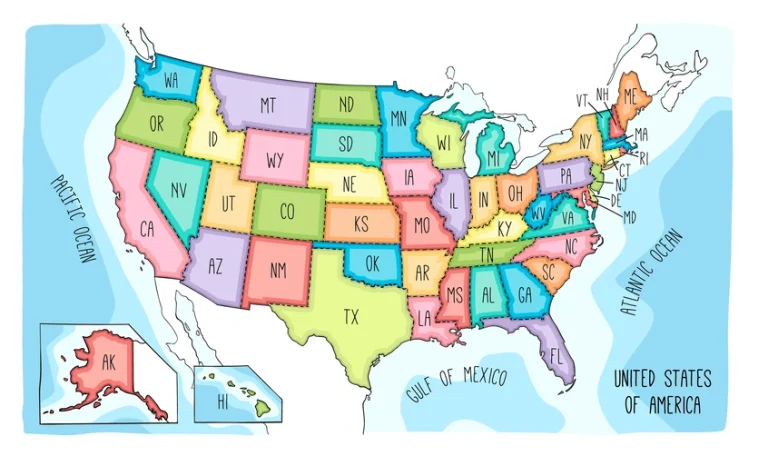Aralia Students Are 4x More Likely to Publish a Research Paper Before College
The Ivy League is more than just a list of eight prestigious universities; it is a title and phrase associated with academic excellence, prestige, and life-long traditions. The term was coined in 1954 to refer to a schools’ athletic aptitude, but is now also used to denote their academic excellence. The list of the top eight schools includes:
| Schools | Location |
| Brown University | Providence, RI |
| Harvard University | Cambridge, MA |
| Cornell University | Ithaca, NY |
| Princeton University | Princeton, NJ |
| Dartmouth University | Hanover, NH |
| Yale University | New Haven, CT |
| Columbia University | New York, NY |
| University of Pennsylvania | Philadelphia, PA |
However, the use of “Ivy” has recently expanded to include Public Ivies, Ivy Plus, and Little Ivies – referring to schools with similar academic reputations and application competitiveness. According to the U.S. News and World Report, these schools also rank at the top. Today, we will dig deeper into each of these terms, providing you with a better understanding and overview of prestigious schools in the U.S., not limited to these eight Ivy League schools.
Public Ivies
Yale University’s Admission Officer, Richard Moll, coined the term “Public Ivies” in 1985 in his book, Public Ivies: A Guide to America’s Best Public Undergraduate Colleges and Universities. Most Ivy League schools are located in the Northeast region; however, Public Ivies are spread out across the country. Moll’s ranking methodology included:
- Academic rigor, quality of faculty, and cost of tuition
- School resources available for students, facilities, and faculty
The main differences between Public Ivies and Ivy League schools are the student body, tuition, and financial endowment. Public Ivies generally have a larger student body, such as UCLA, which admitted 15,602 applicants in 2020; while Harvard only admitted 2,320 new students. Due to the larger student body, the financial endowment is typically more limited for Public Ivies’ schools. However, Public Ivies offer lower tuition rates, especially if you are an in-state student.
The list has drastically changed over the past 30 years, but generally speaking, Public Ivies are public colleges and universities that are renowned for their academic excellence, similar to Ivy League schools.
| Original Public Ivies | Runner-ups |
| College of William & Mary (Williamsburg, Virginia) | University of Colorado Boulder |
| Miami University (Oxford, Ohio) | Georgia Institute of Technology (Atlanta) |
| University of California (entire UC system) | The University of Illinois at Urbana–Champaign |
| University of Michigan (Ann Arbor) | New College of Florida |
| The University of North Carolina at Chapel Hill | Pennsylvania State University (University Park) |
| The University of Texas at Austin | University of Pittsburgh |
| University of Vermont (Burlington) | The State University of New York at Binghamton (also known as Binghamton University) |
| University of Virginia (Charlottesville) | University of Washington (Seattle) |
| University of Wisconsin–Madison |
THE GREENE PUBLIC IVIES LIST
In 2001, Howard and Matthew Greene, presidents of Education Consulting companies in the U.S., published The Public Ivies: America’s Flagship Public Universities to discuss 30 Public Ivy schools by region.
| Northeastern | Mid-Atlantic |
| Pennsylvania State University at University Park | University of Delaware |
| Rutgers University | University of Maryland |
| The State University of New York at Binghamton (also known as Binghamton University) | College of William & Mary |
| University of Connecticut | University of Virginia |
| Southern | Western |
| University of Florida | University of Arizona |
| University of Georgia | University of California (Berkeley, Davis, Irvine, LA, San Diego, Santa Barbara) |
| The University of North Carolina at Chapel Hill | University of Colorado Boulder |
| The University of Texas at Austin | University of Washington |
| Midwest |
| Indiana University |
| Miami University (located in Oxford, Ohio) |
| Michigan State University |
| The Ohio State University |
| The University of Illinois at Urbana-Champaign |
| University of Iowa |
| University of Michigan |
| University of Minnesota |
| University of Wisconsin-Madison |
Ivy Plus Schools
Another term used frequently is Ivy Plus, referring to schools that consistently rank in the top 20, besides the 8 Ivy League schools. The schools in the Ivy Plus list are similarly prestigious schools with highly competitive rates, large endowments, and outstanding alumni networks. The term “Ivy Plus” is often used in the context of higher education rankings, networking opportunities, and other collaborations among the institutions. Ivy Plus schools may partner on research initiatives, exchange programs, or joint events. The term can also be used in reference to alumni networks, as graduates of these institutions often have valuable connections in a variety of fields.
The various universities that are frequently included in the Ivy Plus Schools group vary, but they generally share similar characteristics with the Ivy League institutions, such as a commitment to academic excellence, selective admissions, and a strong reputation for research and scholarship. Some of the universities that are often included in the Ivy Plus group include the Massachusetts Institute of Technology (MIT), Stanford University, and the University of Chicago.
Through researching different lists, we have gathered the schools most commonly listed as Ivy Plus:
| School | Location |
| Massachusetts Institute of Technology | Cambridge, MA |
| Stanford University | Stanford, CA |
| University of Chicago | Chicago, IL |
| California Institute of Technology | Pasadena, CA |
| Johns Hopkins University | Baltimore, MD |
| Northwestern University | Evanston, IL |
| Duke University | Durham, NC |
Little Ivies
Little Ivies, also called Mini Ivies, are an unofficial list of small, private liberal arts colleges in the Northeastern area. This name is used due to the smaller student bodies that still provide academic rigor and a selective admissions process, aligning with Ivy League standards. Most of the Little Ivies focus on undergraduate education.
Some of the schools that are commonly included in this group include Amherst College, Bowdoin College, Colby College, Middlebury College, Swarthmore College, Williams College, and Wesleyan University. These schools are known for their small class sizes, strong sense of community, and rigorous academic programs.
Little Ivies/Mini Ivies List:
| Amherst College (Amherst, MA) | Lafayette College (Easton, PA) |
| Bates College (Lewiston, ME) | Middlebury College (Middlebury, VT) |
| Bowdoin College (Brunswick, ME) | Swarthmore College (Swarthmore, PA) |
| Bucknell University (Lewisburg, PA) | Trinity College (Hartford, CT) |
| Colgate University (Hamilton, NY) | Tufts University (Medford, MA) |
| Connecticut College (New London, CT) | Union College (Schenectady, NY) |
| Colby College (Waterville, ME) | Vassar College (Poughkeepsie, NY) |
| Hamilton College (Clinton, NY) | Wesleyan University (Middletown, CT) |
| Haverford College (Haverford, PA) | Williams College (Williamstown, MA) |
While Public Ivies offer larger schools with strong traditions, Little Ivies provide personal attention to students due to their small class sizes. Regardless of the school you attend—whether it is Ivy or non-Ivy—we firmly believe that you will learn and grow as a determined and career-oriented college student, ready to change the world! The upcoming article will discuss other Ivy-related terms and specifically Hidden Ivies, New Ivies, and Other Ivies.










